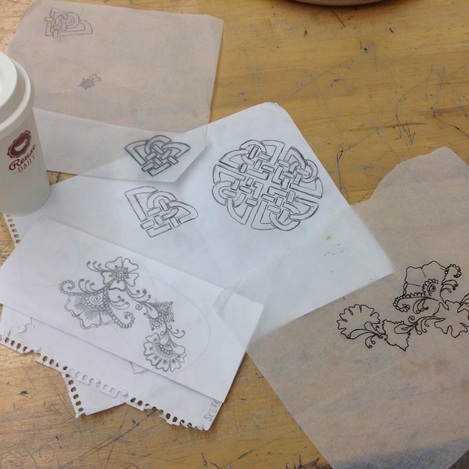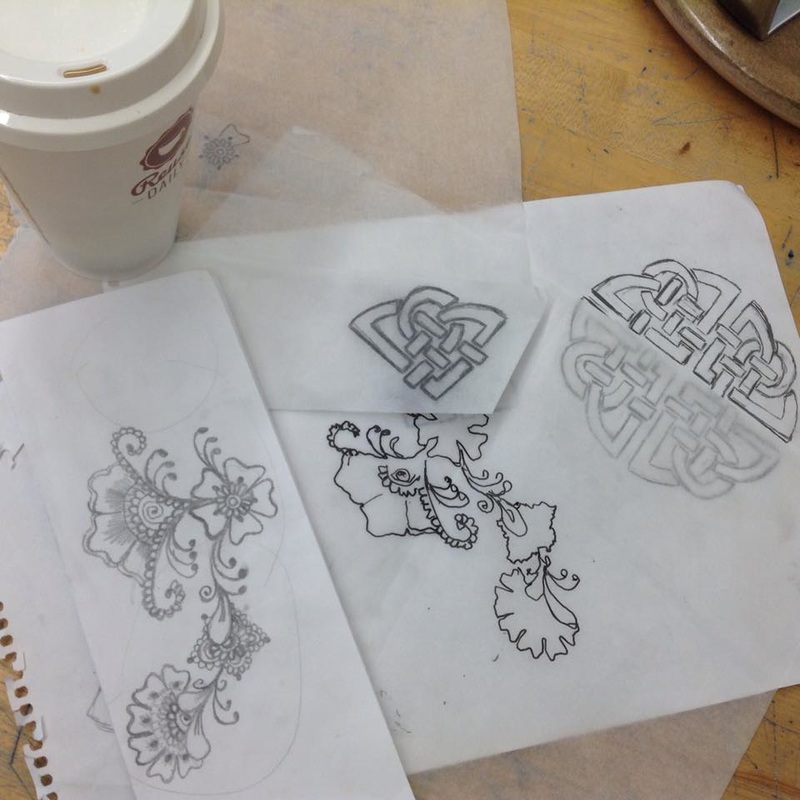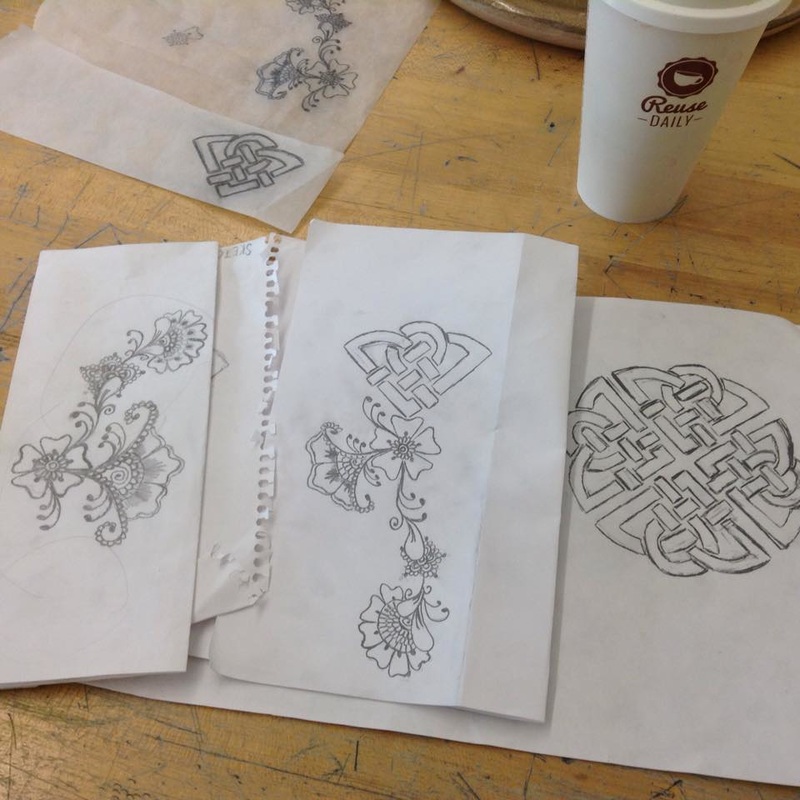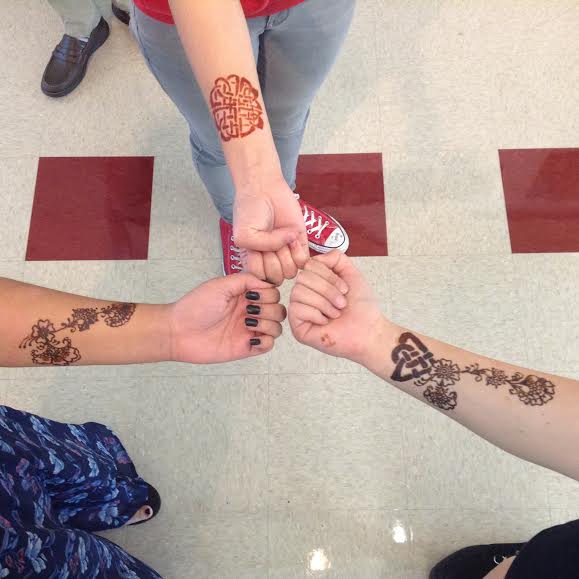From the first day of school, I knew I wanted to involve my culture into one of my projects. It wasn't until I attended several mini lessons (especially ones in history) that I realized that I could focus on immigration. After all, I am a first generation Bengali- American. That being said, I delved into researching about the different cultural groups of immigrants that came to America.
Origin of Immigrants:
|
Ireland
A new wave of immigrants swarmed to the US during the Great Hunger in Ireland. Famine immigrants were the first massive group of poor refugees to ever arrive in America. That being said, the Americans were becoming overwhelmed. Irish immigrants immediately settled into the lowest ring of society and waged a daily battle for survival. Boston The roughest welcome the Irish immigrants received in America were from Bostonians. The people in Boston were of English-Puritan descent. With Irish Catholics coming into their city, they pointed and laughed at their outdated style and watched as Irishmen settled with their families in enclaves near the Boston waterfront. These places eventually became exclusively Irish. The new immigrants took any unskilled job they could get and-- just like in Ireland-- became victims of unethical landlords. Homes that used to be for one Yankee family were being rented room by room for possibly hundreds of Irishmen. Due to those unsanitary conditions, sixty percent of children Irish children born in Boston didn’t live to see their sixth birthday. Many adult Irish lived in average six years after stepping off the boat. Although they faced many troubles, the Irish were grateful. Back in Ireland, many men received 8 cents a day and the dollar they were being paid was considered a tremendous improvement. New York Three times bigger than Boston, New York was better able to absorb the incoming Irish immigrants. While they were not greeted by prejudice like in Boston, the Irish were met by con artists and shifty characters. Immediately upon arrival, the immigrants were greeted by Irishmen known as ‘runners’ who spoke in Gaelic and promised to ‘help’ their fellow countrymen. Many immigrants eagerly accepted this offer, having been afraid of the prospect of America. Those who were hesitant at first, were pressured into accepting the runner’s offer. The first con the runners made were directing the new immigrants to homes of a “friends”. They promised good meals, affordable, comfy homes, and free storage space for luggage. The homes they were actually put into were filthy hell-holes in lower Manhattan where the confused immigrants were shoved into fermin infested rooms with 10 other unfortunate souls. Much like Boston, New York faced a rise in crime and infant mortality as men and boys let off steam by drinking and getting into fights. Cuba Since 1959, there have been four major waves of Cuban immigrants coming to the U.S. Post Castro’s Victory Until the United States government imposed a blockade of Cuba at the time of the Cuban missile, Cubans who immigrated to the U.S. tended to be people who were supporters of Batista and against Castro’s socialist government. Before the blockade, almost 250,000 Cubans immigrated to the U.S. 1965- 1973 The second major wave of Cuban immigrants took place when Cuba and the U.S. agreed to allow Cubans with relatives living in the U.S. to be transported from Cuba. The transportation in the beginning was through boat, but when many died from boating accidents, transportation continued through plane. Mariel Boat Lift Castro allowed any willing Cuban to leave Cuba and head to America through boat. Some 125,000 Cubans took advantage of that and left the port of Mariel to Florida. Economic Conditions Worsen India Since 1990s, Indians became the second largest immigrant group to enter America after Mexicans. Similar to early Chinese and Japanese immigrants, many incoming Indians were unskilled and uneducated farmers. The 1965 Immigration and Nationality Act The act allowed a channel for highly skilled professionals and students to have access to work- based visas. The Immigration Act of 1990 further refined temporary skilled workers and increased the number of permanent work-based visas. Italian Upon their arrival to the New York harbor, Italian immigrants were mesmerized by the Statue of Liberty and tall buildings of Manhattan. Ellis Island Although the immigrants had traveled to America, it did not mean that they would be staying there. As soon as they got to Ellis Island, the Italians had to go through immigration inspectors and try to convince them that they would not cause any trouble and that they are worthy of staying. After passing quarantine, the immigrants had to go through a series of tasks. First, they were separated into two lines: women and children in one, and men in the other. Then, each person was tagged with a color-coded slip of paper that was inscribed with a manifest number, the name of the steamship, and the immigrant’s name. These procedures were often considered unnerving to the immigrants, but with almost 2,000 people disembarking the ship at a time it was necessary to keep everything orderly. The first step was medical inspection. Doctors were assigned from the U.S. Public Health Service to perform the necessary procedures. Three doctors were tasked to look for any possible trace of disease in each passenger. If someone was sick from the voyage, they were immediately hospitalized and later inspected. The second step was immigration inspection, where the main inspection was taken place in the Registry Room. Medical certificates, testimonials of good character, and warning telegrams from foreign police forces were all examined. Questions were asked from inspectors to see if the immigrants understood, spoke, wrote, or read English. 80% of the Italian immigrants passed inspection and were free to go down to the ground floor to wait for a ferry to transport them to Manhattan or the Jersey City Railway Terminal. Beneath Wild Hair
|
After researching a ton of information about various groups of immigrants, I compared each of their unique experiences and looked for a common thread behind the reason they came to America and their culture itself.
Using two out of the four groups I researched, I picked different designs to put into my art portion. I found out that both the Indian and Celtic designs meant love and eternity. Trying to emphasis the fact that immigration is the beginning of a new, mixed culture that could end up being just as beautiful as it's origins, I created my own symbol.
Much like a compare and contrast diagram, I created a new symbol using the similarities between the two original designs. Without realizing, my new symbol ended up being a rose.
A rose symbolized love (just like the other two designs) and hope. I saw this as the love and hope the immigrants carried as they traveled to America. I brought in henna from my own house and applied it onto other Apollo students who represented the origins of the designs. For the Celtic design, Olivia Garisto represented the European culture. Bea Llarena represented the Asian culture with the Indian design. Finally, Sydney Little represented the new symbol as her mom is Filipino and her dad is from European descent.
Although the work was not my best due to being unfamiliar with Celtic designs, I still believe that something powerful came out of this experience.
Even when applying, you could tell that getting used to that one Celtic design took awhile. I wasn't familiar with it, and therefore hesitant. For the immigrants, they were very much the same when coming to America. They were used to their own culture, much like how I was used to doing the classic Indian design. That took significantly less time than the other designs. When I did the final, mixed design, I was somewhat familiar with the Celtic design, but still hesitant when applying it. I know I can personally relate this to my own life as a first generation Bengali- American. I'm familiar with the American way of living, but it hasn't clicked as much as the Bengali way of living. Overall, this experience has made me realize that there is more to henna than I could have imagined. When you apply something other than a Indian design, you are mixing two cultures in a beautiful sense. Behind: Beneath Wild HairIt took a lot for my poem to get where it is now. It originally was a piece I did for an old English class.
The title was "I am Everywhere," but upon further speculation I realized that that wasn't the point of my poem. It actually contradicted everything I wanted to say. So that portion of my original had to go. I then realized that I, individually, have grown since I wrote the poem. So, I had to go back and cut things out while simultaneously adding things into it. After finally getting everything together, I revised the poem with Mr. Ward. It took almost two weeks for me to finalize the poem. All because of one line: "Hidden away in the cellar, trickling down moss stained walls." Within this process I realized that I really had to dig into myself and ask myself what I wanted my readers to feel and see when they heard that line. |
In the end, not only did I learn about other immigrants and what they have gone through, but I learned more about my own culture and how it means more than what I originally thought. Culture affects who you are, and if you take the time to look into your culture and the ones around you, it will overall effect the way you look at yourself.




